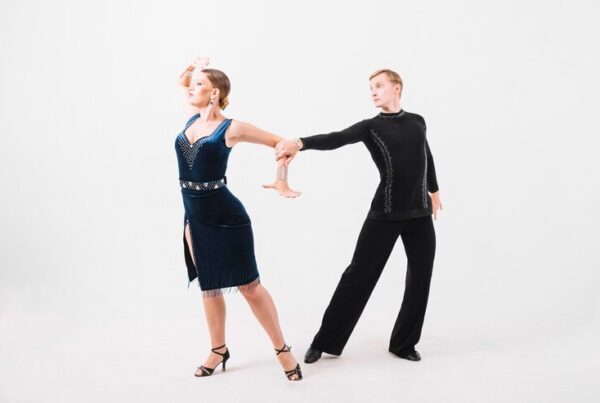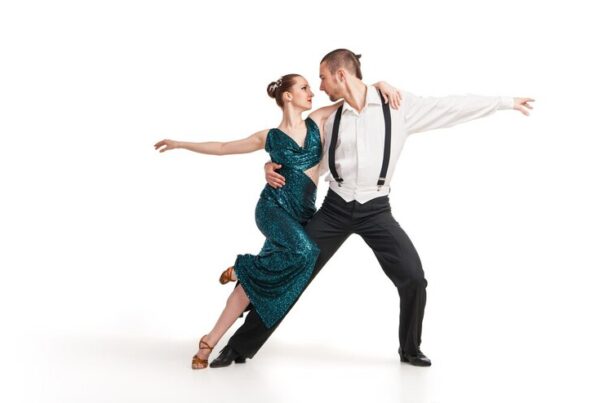
Learning salsa is like learning a new language, but instead of words, you communicate with rhythm and movement. Let’s translate that rhythm into unforgettable dance moves. I still remember my first salsa class. The music was electrifying, and the energy was contagious. That one class transformed my entire outlook on dance. Let me share with you how you can experience this joy too. Whether you’re a beginner or an intermediate dancer, mastering salsa dance moves can enhance your confidence and add a spark to your dance journey. In this blog post, we’ll provide a comprehensive guide to help you perfect your salsa dance moves.Let’s learn different types of salsa dance moves!
Salsa Dance An Overview Of Origin
Salsa is a popular and lively dance style that originated in the Caribbean, particularly in Cuba, and has spread around the world. It is a partner dance that blends elements from Afro-Cuban dance traditions, such as Son, Cha-cha-cha, and Mambo, with jazz, rock, and other musical styles. Salsa is characterized by its energetic and rhythmic movements, complex footwork, and vibrant music.
Understanding the Salsa Beat
The Importance of the Salsa Beat
When it comes to salsa dancing, the beat is your best friend. It’s the heartbeat of the music and the rhythm that guides every step you take. Whether you’re just starting out or have some experience, getting comfortable with the salsa beat will make your dancing smoother and more enjoyable. Think of it as the foundation of your dance; once you have a good grasp of it, everything else falls into place.
The Clave Rhythm
Let’s talk about the clave rhythm, a key component in salsa music. Imagine a rhythmic pattern that gives salsa its unique, infectious vibe—this is the clave. It’s a bit like a conversation between the instruments, creating a call-and-response feel. The clave can follow a 2-3 or 3-2 pattern, meaning it emphasizes different beats depending on the song. Don’t worry if it sounds a bit technical; the more you listen to salsa music, the more you’ll start to feel the rhythm naturally.
Tips for Counting the Beats
Counting the beats is a simple yet powerful tool to help you stay in sync with the music. Here’s how you can start:
- Listen and Clap: Begin by listening to salsa songs and try clapping along with the beat. This helps you physically connect with the rhythm.
- Count Out Loud: Go ahead, count out loud! Saying “1, 2, 3, 5, 6, 7” while you dance can make a big difference. Remember, salsa often skips the 4 and 8 beats, so you’ll rest on those counts.
- Feel the Music: As you get more comfortable, try to feel the music rather than just count it. Let the rhythm guide your body and movements naturally.
Learn To Salsa Dance Steps
Mastering the basic salsa dance steps is the foundation for building your confidence and skills on the dance floor. Whether you’re a leader or a follower, understanding these core movements will help you navigate salsa dancing with ease.
Fundamental Steps for Leaders and Followers
In salsa, the dance partnership consists of two roles: the leader and the follower. The leader’s role is to initiate and guide the movements, while the follower responds and complements the leader’s actions. Although the roles differ, both dancers need to be familiar with the basic salsa dance steps to dance together smoothly.
The Basic Step Pattern
The most fundamental salsa step is often called the “basic step” or “basic step pattern.” This pattern consists of a series of steps taken over eight counts, with steps occurring on counts 1, 2, 3, 5, 6, and 7, and pauses on counts 4 and 8. Here’s a breakdown for both roles:
For Leaders:
- Step forward with the left foot on count 1.
- Step in place with the right foot on count 2.
- Step back with the left foot on count 3.
- Pause on count 4.
- Step back with the right foot on count 5.
- Step in place with the left foot on count 6.
- Step forward with the right foot on count 7.
- Pause on count 8.
For Followers:
- Step back with the right foot on count 1.
- Step in place with the left foot on count 2.
- Step forward with the right foot on count 3.
- Pause on count 4.
- Step forward with the left foot on count 5.
- Step in place with the right foot on count 6.
- Step back with the left foot on count 7.
- Pause on count 8.
These steps form the basic rhythm and movement of salsa dancing. As you practice, focus on maintaining a smooth and consistent flow, keeping your steps light and controlled.
The Shine and Its Importance
“Shines” are solo movements that dancers perform independently, often during a break from partner dancing. These solo moments allow dancers to express their individuality and showcase their unique style. Shines can include various footwork patterns, body movements, and styling elements. They’re an essential part of salsa dancing, as they give dancers the opportunity to be creative and demonstrate their skills.
Incorporating shines into your dancing can also improve your timing, balance, and overall coordination. Practice shines regularly to build confidence and enhance your ability to move freely on the dance floor.
Types of Turns
Turns add excitement and variety to salsa dancing. Here are some of the most common types of turns you can incorporate into your basic salsa steps:
- Cross Body Lead: A fundamental move where the leader guides the follower across their body, changing places. This move is often used to transition between different patterns and can be embellished with turns.
- Outside Turn: In this turn, the follower turns to the outside, usually initiated by the leader on counts 2 or 6. The outside turn can be single or double, depending on the number of rotations.
- Spot Turn: Both the leader and follower can perform spot turns, where they turn in place. This turn is often executed with a quick and sharp motion, adding a dynamic element to the dance.
- Inside Turn: This turn involves the follower turning inward toward the leader. It’s typically initiated on counts 2 or 6 and can be performed with varying degrees of complexity.
Mastering Salsa Footwork
Footwork is a vital aspect of salsa dancing, allowing dancers to move gracefully and confidently across the dance floor. Whether you’re a beginner or have been dancing for a while, mastering your footwork will not only enhance your dance experience but also elevate your overall style. Let’s delve into the essentials of perfecting salsa footwork and making it resonate with your audience.
The Significance of Proper Foot Placement
Proper foot placement is the foundation of good salsa dancing. It helps you maintain balance, control, and fluidity in your movements. When your feet are correctly positioned, you can execute steps and turns more precisely, reducing the risk of stepping on your partner or losing your rhythm. Good foot placement also contributes to the aesthetic appeal of your dance, making your movements look clean and polished.
To achieve proper foot placement, focus on the following:
- Step lightly: Avoid stomping or making heavy steps. Salsa is a smooth and fluid dance, so aim for light, controlled steps.
- Stay grounded: Keep your weight centered and slightly forward. This helps you stay balanced and ready to move in any direction.
- Use the balls of your feet: When dancing salsa, it’s common to stay on the balls of your feet, allowing for quicker, more agile movements.
Weight Transfer Techniques
One of the key elements of salsa footwork is mastering weight transfer. This involves shifting your weight from one foot to the other as you move, ensuring that you’re always balanced and ready for the next step. Proper weight transfer creates a natural flow in your dance, making your movements look effortless and connected.
Here are some tips for mastering weight transfer:
- Practice shifting weight: Stand in place and practice shifting your weight from one foot to the other. Feel how your body moves as your weight shifts, and try to make the transition smooth and controlled.
- Align your body: Keep your body aligned with your feet as you transfer weight. This alignment helps you maintain balance and stability.
- Stay relaxed: Tension can make weight transfer awkward and stiff. Keep your muscles relaxed and your movements fluid.
The Role of Rhythm and Timing in Footwork
In salsa, rhythm and timing are everything. The music’s beat dictates when you step, turn, and move, so understanding the rhythm is crucial. Salsa music typically has a “quick-quick-slow” rhythm, with steps taken on counts 1, 2, 3, and 5, 6, 7. The counts 4 and 8 are usually pauses or moments to catch your breath and prepare for the next sequence.
To synchronize your footwork with the rhythm, consider the following:
- Listen to the music: Spend time listening to salsa music and familiarizing yourself with its unique rhythm and beats. Try to tap your feet along with the music to internalize the rhythm.
- Count out loud: As you practice, count the salsa dance beats out loud to help keep track of your steps and ensure you’re staying on time.
- Start slow: Begin practicing salsa dance footwork at a slower pace, then gradually increase the speed as you become more comfortable with the rhythm and timing.
Incorporating Upper Body Movement
Arm and Hand Positions
Knowing salsa dance poses are crucial to ace. Your upper body, including arm and hand positions, plays a significant role in salsa. Leaders use their arms to guide their partners, while followers maintain a responsive frame.
Body Isolation Techniques
Body isolation involves moving different parts of your body independently, such as your shoulders, hips, or head. This technique adds depth and expression to your salsa dance moves.
Impact of Facial Expressions
Expressive facial expressions can enhance your performance and convey emotion. Smile, enjoy the salsa dance music, and let your face reflect the joy of dancing.
Final Verdict
Mastering salsa dance moves isn’t just about perfecting your steps—it’s about immersing yourself in the rhythm, feeling the music, and expressing your unique style. From understanding the salsa beat to executing flawless footwork and adding personal flair, every aspect of salsa dancing offers a chance to enhance your confidence and enjoyment on the dance floor.
Think you’ve got the perfect salsa dance moves to steal the spotlight? Challenge yourself to perfect your salsa dance steps and show off your newfound skills at the next dance party. Take on the salsa challenge now! Sign up for a dance class, practice those salsa dance moves, and tag us in your performance videos. We can’t wait to see your progress and cheer you on!










